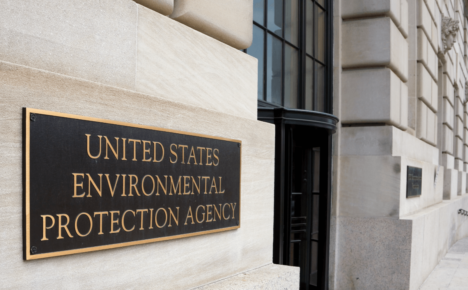
Methane is considered a small player compared to carbon dioxide in the total volume of greenhouse gases emitted each year in the United States. In late 2023, the Environmental Protection Agency (EPA) issued a final rule intended to reduce methane emissions from the oil and gas industry. The rule contains some of the most restrictive methane pollution limits in the world..Some state governments – especially Texas – think the feds have overstepped their authority. These authorities believe compliance with the new requirements will impose unreasonable financial hardship on the industry.
What the Final Rule Requires Oil and Gas Companies to Do
The EPA has the authority to limit the emissions of air pollutants under the Clean Air Act (CAA).
On December 2, 2023, the EPA published a final rule aimed at reducing methane emissions released by the oil and gas industry.
Compliance with the rule is expected to mitigate the release of 58 million tons of methane between 2024 and 2038. This would equal a nearly 80% reduction from what would otherwise be emitted. Net climate and ozone benefits are estimated to be worth about $7.5 billion a year.
The rule updates and strengthens New Source Performance Standards (NSPS) for new, modified, or reconstructed oil and gas sources. It also establishes emissions guidelines for states to use to develop plans to reduce methane emissions from all existing sources.
Some of the more notable emission reduction strategies that must be implemented include:
- Phasing out routine flaring of natural gas from new oil wells
- Routine monitoring for leaks at all well sites and compressor stations
- Eliminating or minimizing emissions from equipment such as process controllers, pumps, and storage tanks (Storage tanks will be required to reduce emissions by 95%)
The NSPS standards applied to any new, modified, or reconstructed sources beginning December 6, 2022, but time is given from the May 7, 2024 effective date to comply as follows:
- Two years to phase out routine flaring (the burning off of a gas byproduct)
- One year to implement zero-emission standards for new process controllers and pumps
- Extended time for leak repair when parts aren’t available before a deadline
Super-Emitters
The EPA maintains that about half of all methane emissions are caused by just a few sources. As a result, the final rule allows for the use of third-party investigators to track down these super-emitters with the use of EPA-approved remote sensing technologies.
The EPA will certify the third parties, evaluate the data they provide, and notify the offending owners and operators. The owners and operators will then be responsible for investigating and reporting the source of the emissions and repairing any leaks or releases covered by an EPA standard. Super-emitter data will be publicly available on a timely basis.
State Plans for Existing Sources
The emission guidelines included in the rule are intended to give states a starting point for their response programs. States will need to develop appropriate plans to establish, implement, and enforce the EPA standards for methane emissions from existing sources.
States will have 24 months to submit their plans to the EPA. After submission, states will have an additional 36 months to implement their plans. Before the rule became final, about half the states let the EPA know that they were not in favor of the federal hard line.
Why Many State Governments are Unhappy with the EPA’s Methane Emissions Reforms
In February of 2023, 24 state governments – including Texas – sent a joint letter to the EPA expressing their concerns about the then-proposed final rule. The states opposed the EPA’s methane emissions crackdown, making the following arguments:
- The EPA has gone beyond the authority given to it by the CAA.
- The EPA requirements encroach on each state’s authority to regulate methane emissions.
- Compliance with the requirements will impose a crushing financial burden on the energy sector.
The letter concluded by reminding the EPA that all of the additional costs would need to be passed on to Americans who will struggle even more to afford necessary energy products.
How the Methane Emissions Reduction Requirements May Impact Texas
Of all the oil and gas players that will be affected by the new requirements, Texas will be hit the hardest because it produces considerably more oil than any other state. The state’s primary oil and gas regulator, the Railroad Commission of Texas (RRC), says the stringent emissions requirements will have the largest impact on the small oil and gas producers whose contributions are essential to the welfare of the economy.
On March 8, 2024, the same day the rule was published in the Federal Register, Texas filed a lawsuit against the EPA to prevent the unauthorized and unprecedented expansion of federal authority and oppose implementation of the onerous emissions standards.
Whatever the eventual outcome, the experienced Texas energy lawyers at MehaffyWeber can be counted on to help energy companies traverse the challenging legal evolution of the oil and gas industry.
